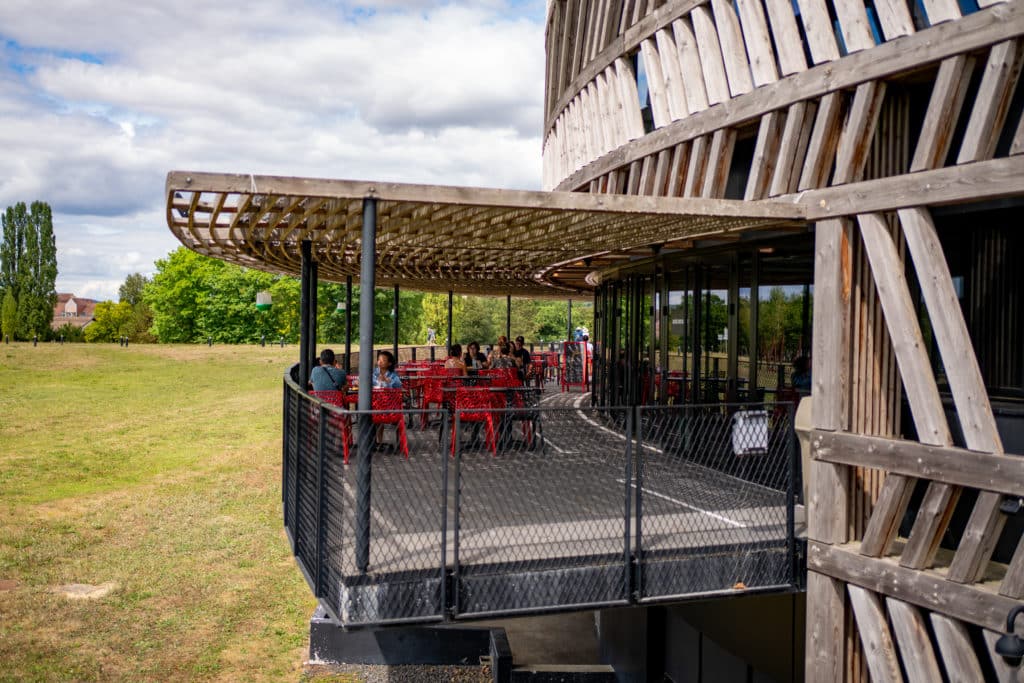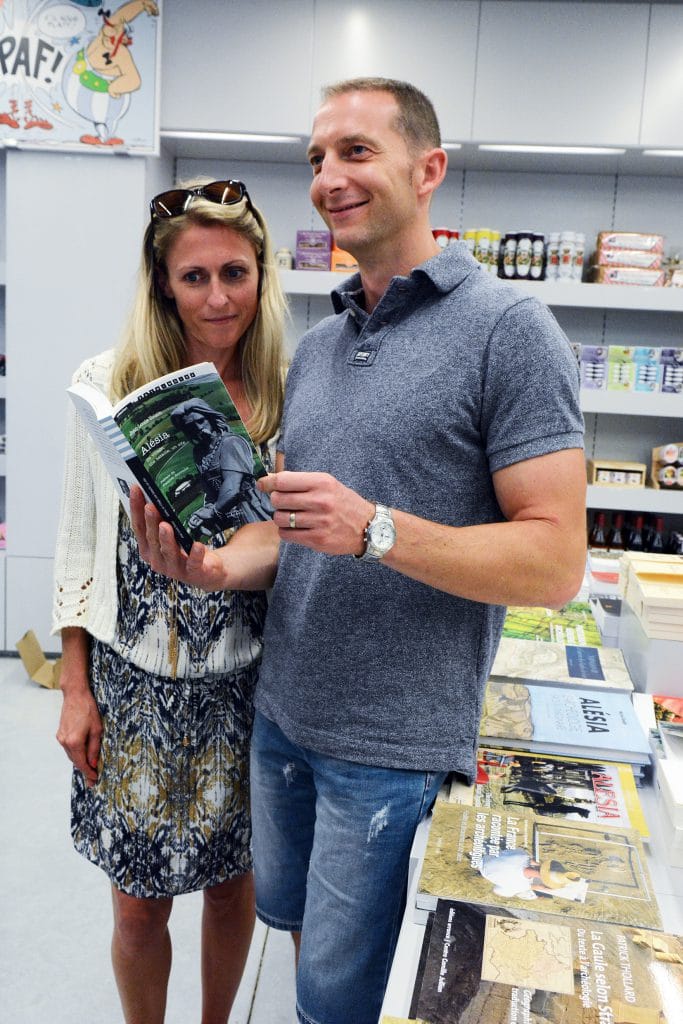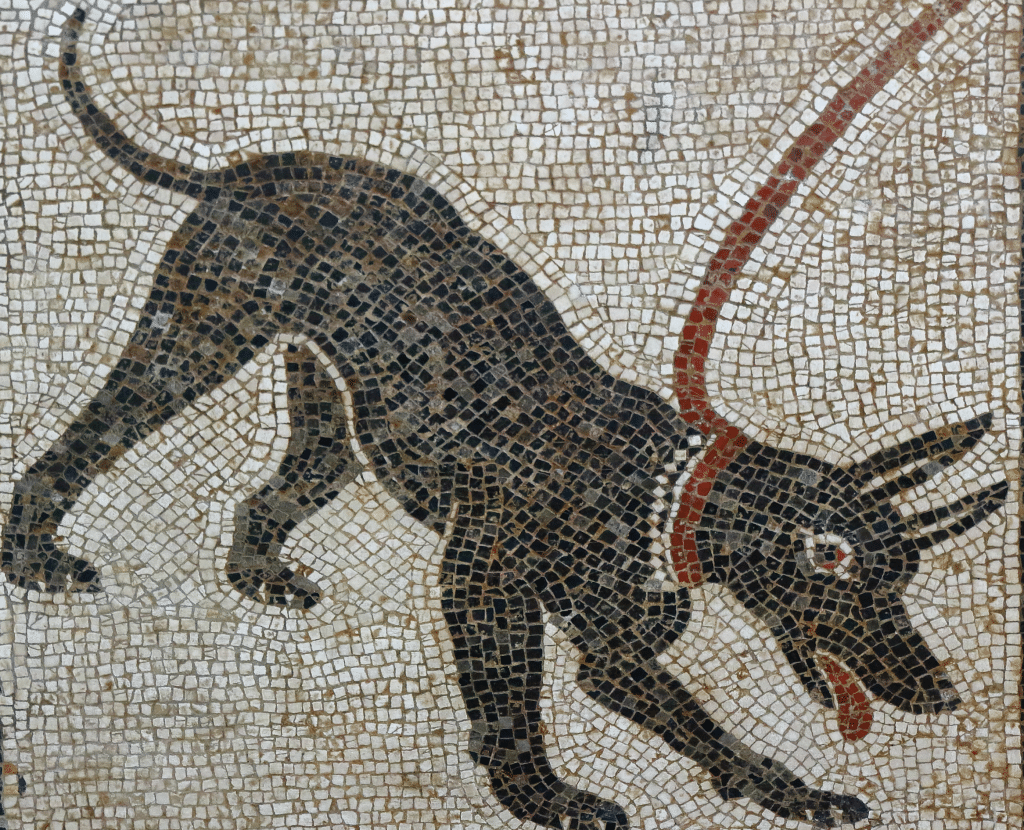
Three sites to visit
MuséoParc Alésia lets you explore three sites: the Museum, the Gallo-Roman ruins and the statue of Vercingétorix.
The Museum
Built on the plain of Alésia, this building with symbolic architecture was designed by famous architect Bernard Tschumi. Its circular form evokes the siege of Alésia, the netting that clads the building provides a nod to the wooden fortifications used by the Romans, whilst the oblique columns of its atrium recall the chaos of the battle itself.
Ready for time travel?
From prehistory to the present day, relive the history of Alésia with more than 600 artefacts and interactive and fun devices: film (sound design, illustrations, 3D), animated characters, soundscapes, 180° screen, model, mapping, manipulations, digital immersion…
A new experience to enjoy with family or friends!
Immerse yourself in the heart of our collective imagination and come “twist the neck” of received ideas! The brawling and mustachioed Gaul? Alésia is a Paris metro station? They ate wild boar everyday, like we read in a famous comic book? Some clichés die hard, but here we have decided to show you the real story… Follow the guide!
In the shoes of a warrior
Rather Gaulish? Rather Roman? You are recruited to join the troops of Caesar or Vercingetorix. Brandish a shield, try on a helmet, practice scorpio shooting and learn how to handle weapons… Become the new recruit!
Get your trowels, get set, dig!
Enter the ArchéoLab, an experimental space to understand the profession of archaeologist: digital excavation tray, ceramics to be reconstructed, games to discover aerial archaeology, archaeozoology and carpology… You will know everything about the importance of archeology in Alesia from the 19th century to the present day.
Alesia, the beautiful Roman
Around a model of the Gallo-Roman city, thematic alcoves present many archaeological pieces discovered in Alésia, evoking the daily life of the inhabitants: crafts, religion, cooking…
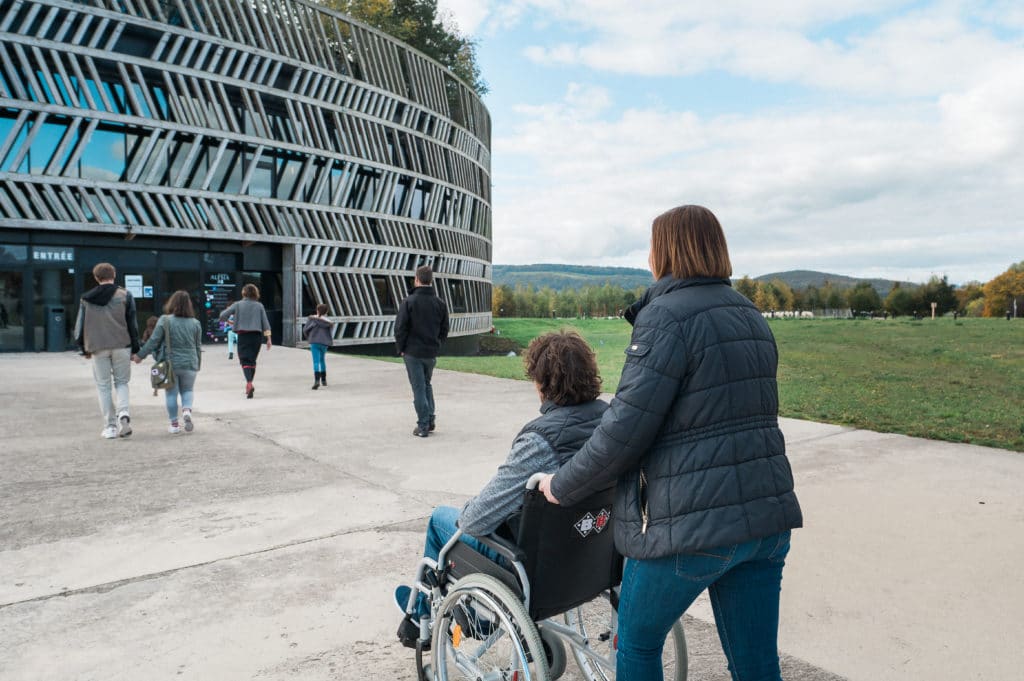
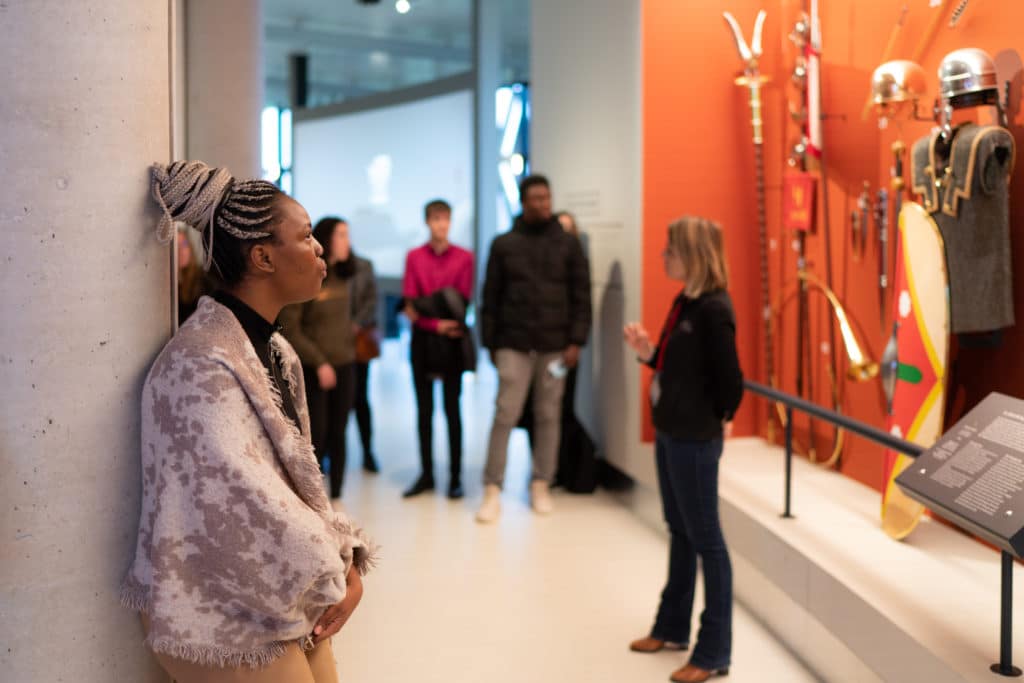
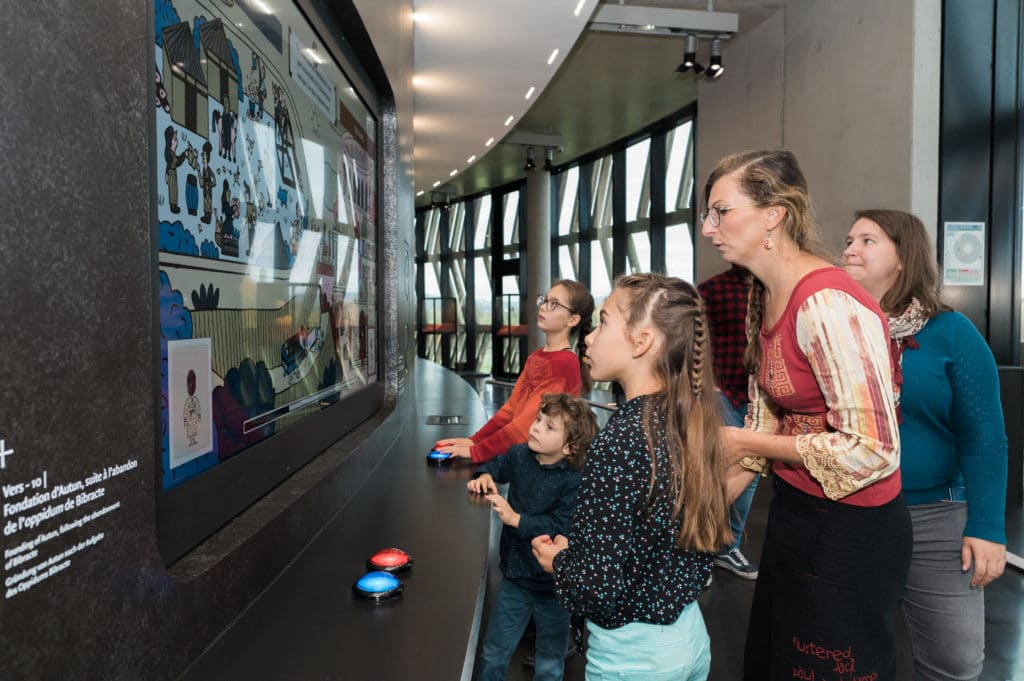
The Gallo-Roman ruins
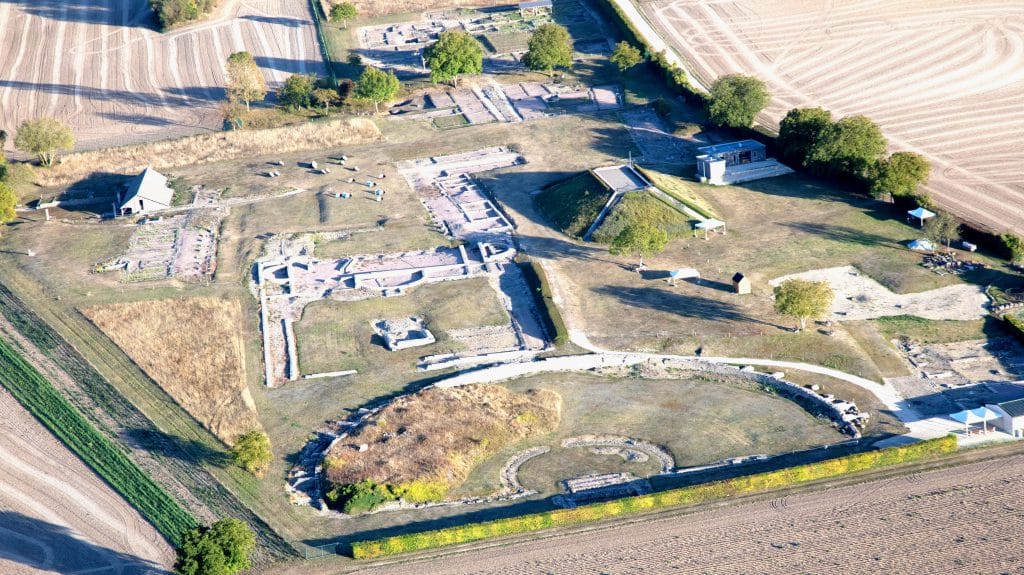
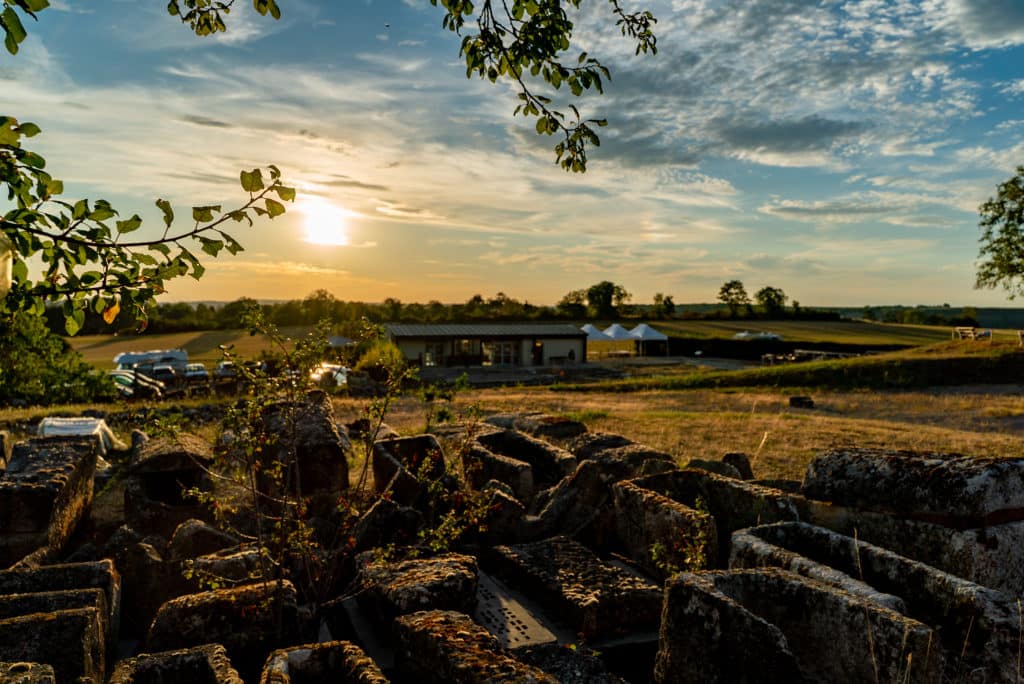
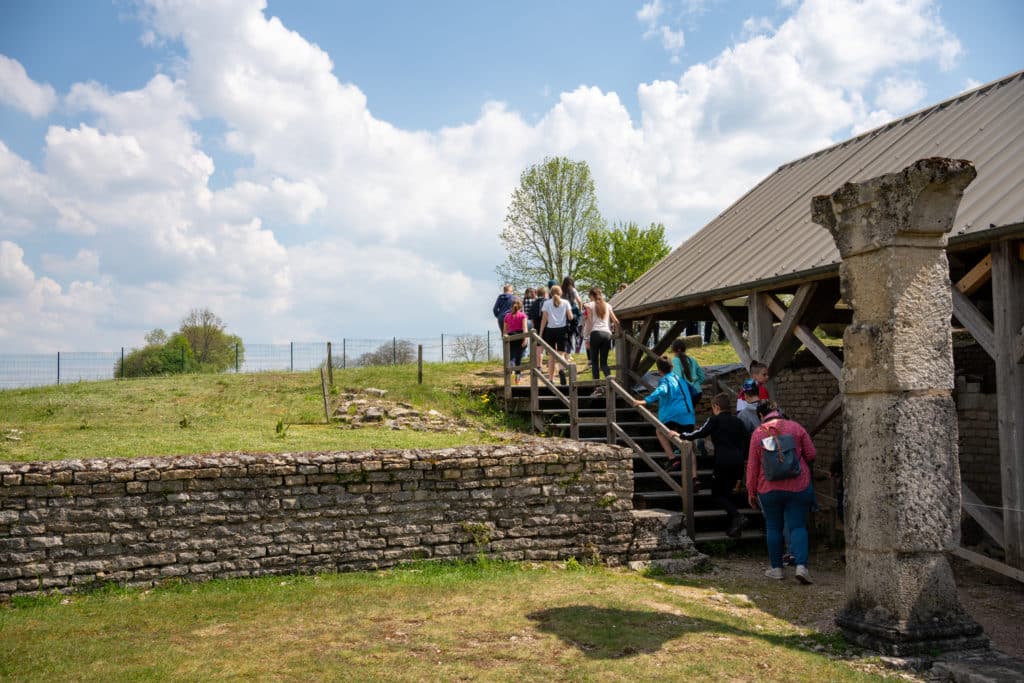
The Gallo-Roman ruins, situated just 3km from the Museum, allow visitors to imagine what daily life was like for the people that settled here following the battle between Vercingétorix and Caesar. Strolling through the ancient streets thanks to a trail with commentary (in French, English, German and Dutch), you can explore the monumental centre made up of a sanctuary, a theatre and a forum enclosed by a basilica, a building known as the Ucuetis monument, an area of residential dwellings…
Alesia in 3D
Thanks to a tablet, set off to explore the remains and go back in time to discover the Gallo-Roman Alesia like you’ve never seen before!
You stroll through its streets to discover its architecture, its urbanism and the daily life of its inhabitants!
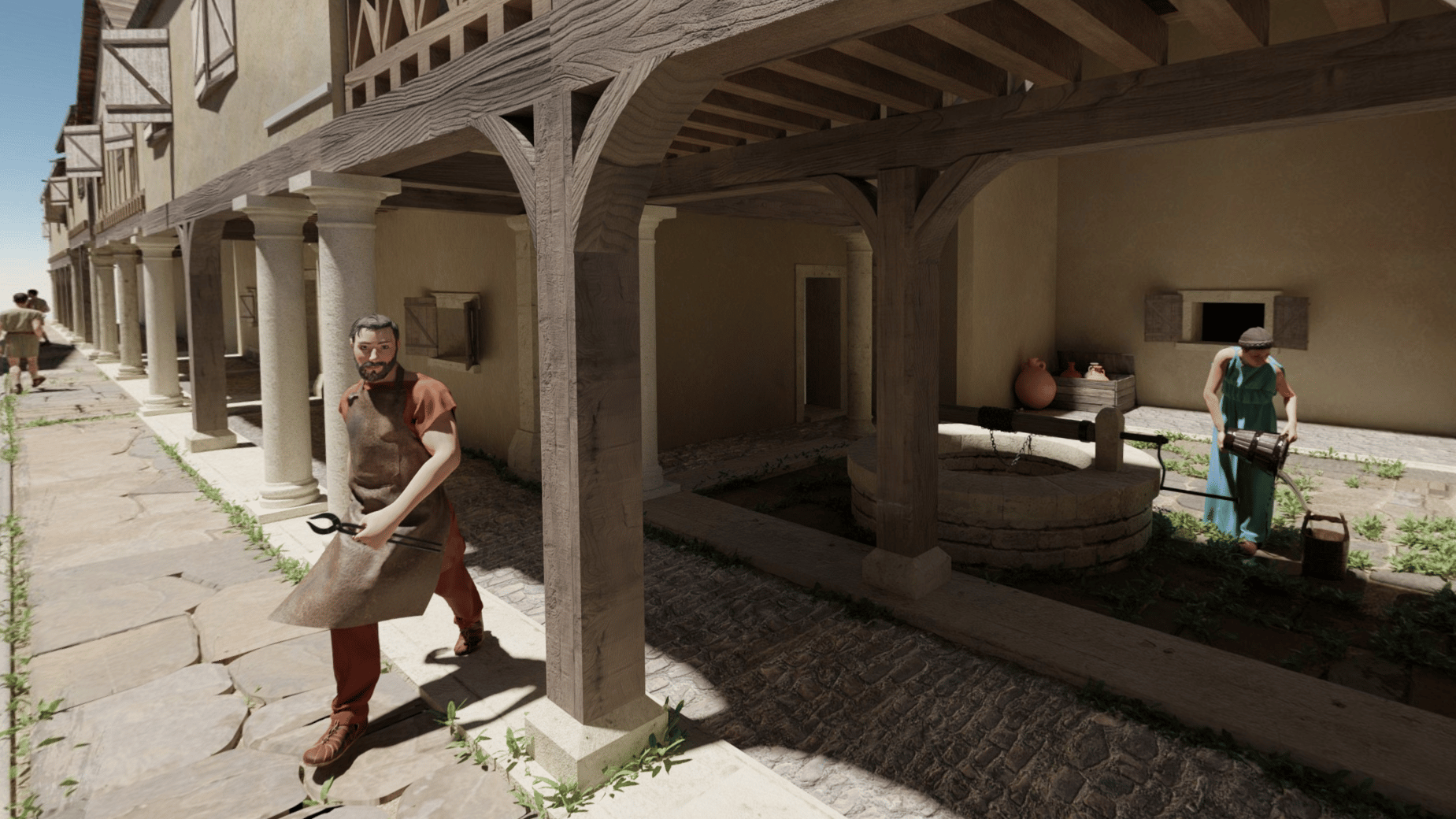
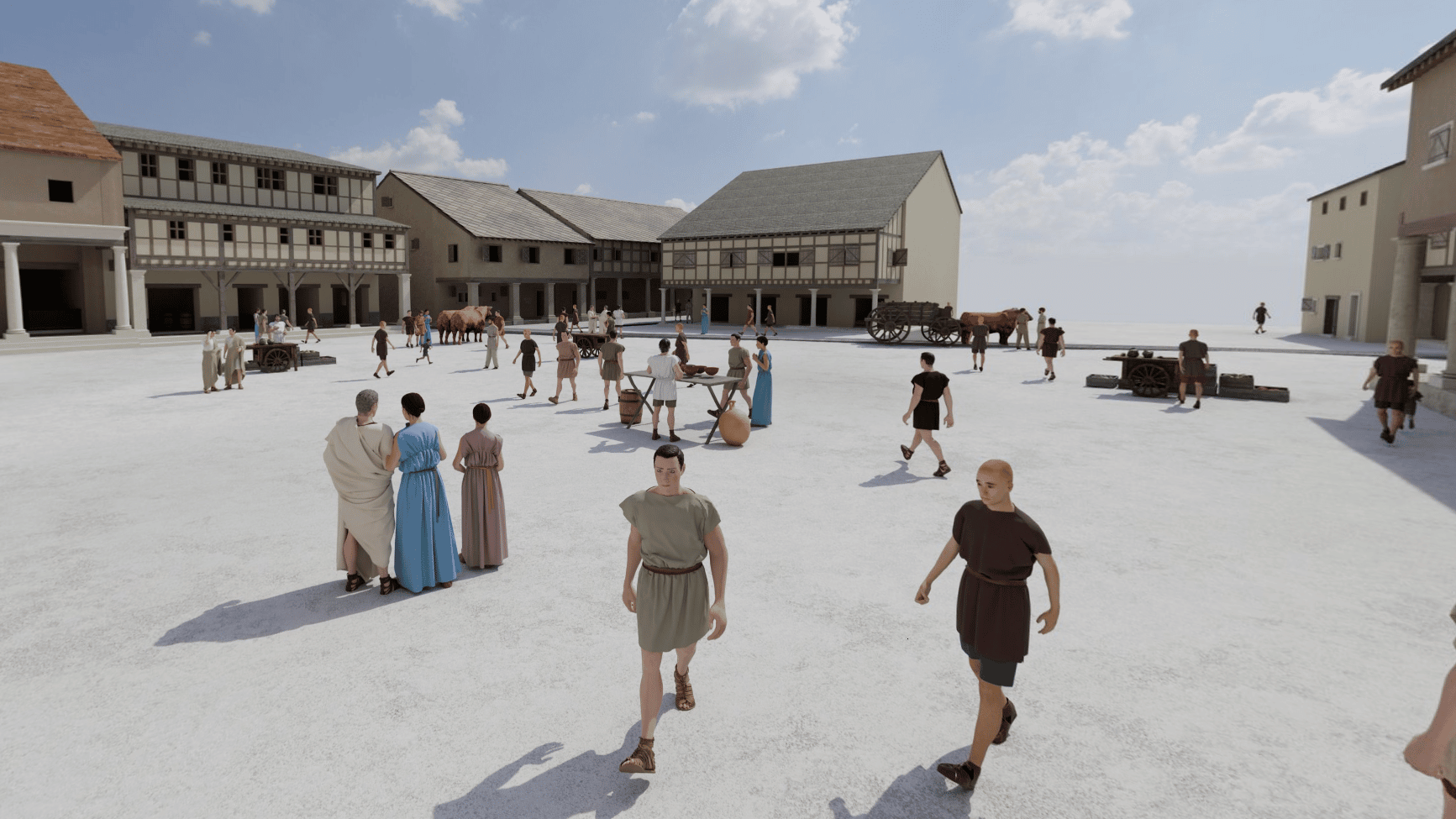

This app « the 4 seasons » is available in French, English, German, Dutch and Spanish.
The statue of Vercingétorix
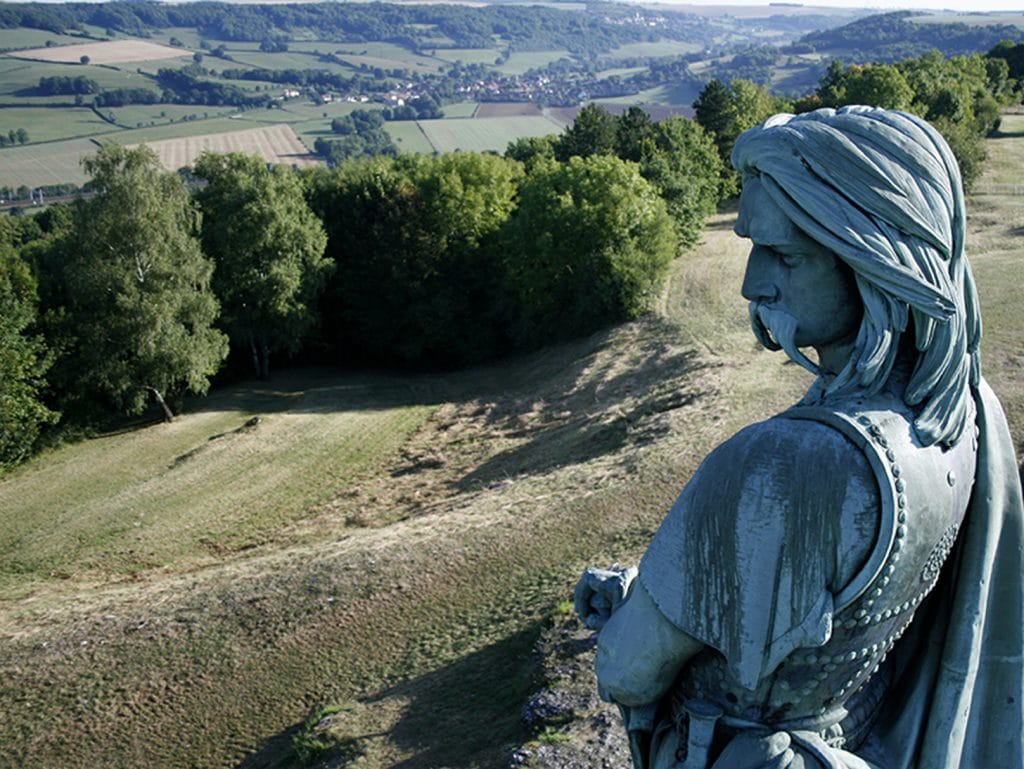
A hundred metres of so from the Gallo-Roman ruins, accessible on foot or by car, you can admire the monumental statue of Vercingétorix dating from 1865. 6.60 metres tall, this work in copper was commissioned by Napoleon III to mark the successful conclusion of the archaeological excavations undertaken at Alésia.
Contemporary analysis of this statue has revealed numerous anachronistic elements and a representation of the Gauls that has now been debunked by recent archaeological discoveries and a rereading of texts from Antiquity.
The statue is free to visit all year round.
The history of the site
The exact location of the Battle of Alésia was debated for many years. In the XIX century, under the orders of Napoleon III, colossal excavations were carried out at Alise-Sainte-Reine from 1861 until late 1865. These brought to light a huge quantity of weapons, coins belonging to the Gauls and Romans and military items. What is more, the methodology employed (cross referring the discoveries with texts written by Caesar, which was truly experimental archaeology at the time) allowed for a life-sized reconstitution of sections of the battle lines and of Roman war machines.
Despite the significance of these findings, the debate raged on and the scientific community remained divided.
In the 1990s, a Franco-German team of archaeologists unearthed new evidence. They were able to confirm that the « oppidum of Mont-Auxois in Alise-Sainte-Reine and the military siege of the first century B.C that was uncovered by archaeological digs corresponded with the Battle of Alésia ».
Today, the French and international scientific community considers Alise-Sainte-Reine as the historic site of the battle.
Quite naturally, it is on this site that the MuséoParc Alésia now stands.

Revisiting the events of 52 B.C
For 6 years, Caesar had been a redoubtable war general whose power was growing and was now ready to lead the War of the Gauls. In order to check his progress, the chieftains of Gaul formed an alliance in 52 B.C under the leadership of Vercingétorix, a young king of the Arverne people. In Gergovie they defeated Caesar, who decided to withdraw to the Roman province to the south of Gaul. On the journey there, his army was attacked in northern Burgundy by the armies of Vercingétorix who relied on the customary superiority of its cavalry. The Romans however, thanks to the assistance of the German cavalry, routed them.
Vercingétorix therefore decided to station his troops (80,000 men, according to Caesar) at the oppidum of Alésia. Facing them was between ten and twelve Roman legions (around 40 to 45,000 men) and several thousand auxiliaries and German cavalrymen.
Caesar took the opportunity to encircle the chieftains of Gaul and lay siege to the oppidum. He ordered the construction of a double line of fortifications and a whole ensemble of very elaborate traps in front of each line.
Of course the Gauls did not just simply watch the Romans; they set out to attack them. The first sortie made by Vercingétorix’s cavalry resulted in defeat and he decided to send them out to bring reinforcements from all across Gaul.
But as the days passed the Roman fortifications were visibly growing stronger and reinforcement did not arrive. The besieged Gauls were ravaged by hunger. What could they do? Surrender? Attempt another sortie? «Following discussions, it was decided that those who were too sick or elderly to be of use would leave the town» De Bello Gallico, VII, 77-78. These exiles, wandering in between the two fortified lines, died of starvation or were massacred.
Help finally arrived: 240,000 infantry and 8,000 cavalry, according to Caesar. Twice more the Gauls attempted to escape and were pushed back on both occasions. When they tried for a third time, for many hours the outcome of the battle was uncertain. However, once again fortune smiled on Caesar. Under pressure from the Romans, who were supported by the Germans, the Gauls from the relief army fled.
Vercingétorix retreated back inside the oppidum and elected to surrender in order to save his men.
Although referred to as a “battle”, the siege of Alésia probably lasted between a month and a half and two months. The experience, discipline, resilience and organisation of the Roman troops, allied with an exceptional knowledge of the art of siege warfare, guaranteed that Caesar enjoyed a definitive advantage.
To arrange your visit
The MuséoParc Alésia welcomes you from 8th February to 30th november, 7 days a week including public holidays.
February to March: 10am to 5pm
April, May and June: 10am to 6pm
July and August: 10am to 7pm
September and October: 10am to 6pm
November: 10am to 5pm
Average duration of visit
Museum 2h (3h during the summer holiday season)
Gallo-Roman ruins: 45 minutes
Ticket office
Last entry at least 45 minutes before the MuséoParc Alésia closes.
Rates
| MuséoParc Alésia | |
|---|---|
| Plein tarif | 12.50 € |
| Tarif réduit* | 10.00 € |
| Tarif junior** | 9.00 € |
* Reduced rate: students, work experience, adults in large family group, unemployed,… (upon presentation of relevant proof)
** Junior rate: from 7 to 17 years – Free for children under 7 years.
Access
By car, train, mobile home, bike or boat… the MuséoParc Alésia awaits you:
1, Route des Trois Ormeaux à Alise-Sainte-Reine (21150)
GPS coordinates:
DD:Latitude: 47.53606 Longitude: 4.468752
Parking : accessible during site opening hours only.
Pitches for mobile homes outside opening hours are available at Venarey-les Laumes and Semur-en-Auxois.
Overnight parking is prohibited.
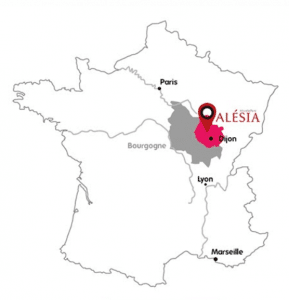
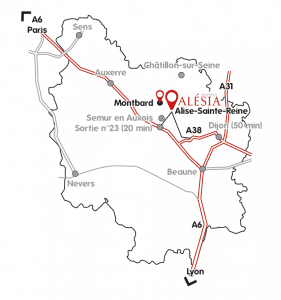
By train, TGV or TER
TGV: station at Montbard, 20 min away (1h from Paris to Montbard)
TER : station at Les Laumes-Alésia, at the foot of the site (30min from Dijon)
By boat along the Canal de Bourgogne : River stop at Venarey-les Laumes, 2km from the MuséoParc Alésia.
By bike along the Véloroute Pays de l’Auxois-Morvan trail: via the Canal de Bourgogne.
Make the most of your visit
Restaurant
The restaurant Le Carnyx also knows how to cater to your needs. The restaurant is open from 11:45am and lets you enjoy a gourmet break for lunch or a quick snack. All-you-can-eat buffets allow you to journey back in time and to explore Burgundian cuisine with its local products.
Bookshop-Boutique
The bookshop-boutiques, situated in the atrium at the Museum and at the reception pavilion of the Gallo-Roman ruins, let you extend your visit and will delight young and old alike.
Shields, swords, helmets, games, books and magazines (available in English and German) on the siege of Alésia, the Gauls, the Romans and on the Gallo-Roman period in general will allow you to make this moment last.
Some of the highlights available for adults include:
– « The Essential Alésia »; Monograph in English and German for 6.50 euros
– Alésia; the Battle; Magazine in English.
– The cuisine of Antiquity; Book in English.
Some of the highlights available for children include:
– Vercingétorix; what a story! In English
– 100 dates in French History; Book in English.
– The History of France; Colouring book in French, English, German and Spanish.
More information at the boutique
Products from this land of Burgundy, so reputed for its gastronomy, will delight your taste buds: mustard, gingerbread, wines and beers (to be enjoyed in moderation)!
Pets at the Museum
Our animal friends, whatever their species or size, are not admitted, other than guide dogs for the blind or other service animals for disabled visitors. (Art. 7 of the MuséoParc Alésia regulations)
At the Gallo-Roman ruins
The supervised areas of the site of the Gallo-Roman ruins allow dogs only when on a lead and they remain the responsibility of their owners. The MuséoParc Alésia reserves the right to refuse entry to any pet without providing justification for its decision.
